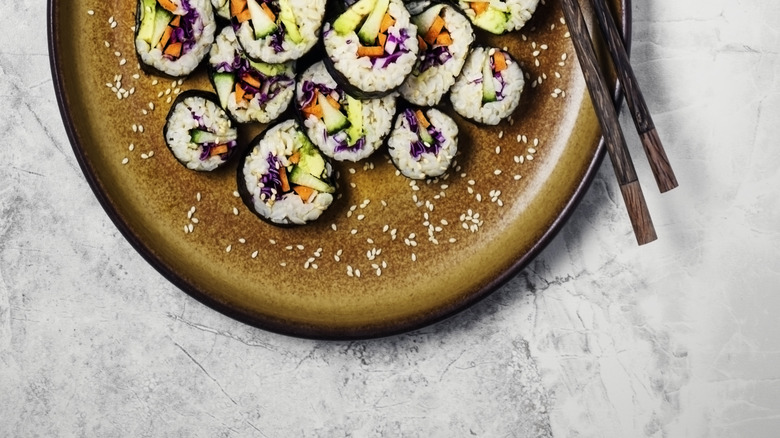Sushi has been popular in the United States for many decades, so you’d think by now we’d know just about all there is to know about this tasty Japanese food. But some sushi questions still linger in the minds of consumers — one being whether sushi should ever be warmed. For an authoritative answer, Food Republic reached out to Dr. Jae Choi, executive chef and owner of Yakitori Jinbei.
The short answer is that whether sushi is fresh or yesterday’s leftovers, direct heat shouldn’t come into play. “There really is not a good way to reheat sushi, since it usually consists of raw fish,” Choi explained. “The only real way would be to let it come to room temperature from its refrigerated status, but I would recommend eating it within 30 minutes.”
The general guideline for perishable foods of any kind, including leftovers, is that they shouldn’t sit at room temperature for longer than two hours (or one hour in temperatures exceeding 90 degrees Fahrenheit). For items containing cold meats, like sushi made with fish, storage temperatures should stay at a maximum of 40 degrees Fahrenheit until the food is ready to be consumed, to prevent potentially dangerous bacterial growth. Allowing sushi leftovers to warm slightly at room temperature will take the fridge chill off, but letting them sit out for too long should never be on the menu.
One possible exception to heating your sushi
Dr. Jae Choi noted that one possible exception to the no-heat rule is leftover maki, which is rolled sushi composed of rice and other ingredients wrapped in toasted nori. Ume shiso maki, for instance, is a vegetarian sushi roll that can easily be made at home, consisting of Japanese plum, shiso leaves, nori, and rice. “Perhaps makis could be reheated if there were no raw fish as an ingredient,” Choi stated. “However, it would have to be at a very low temperature.”
To enjoy leftover sushi, it’s best to let it sit out of the fridge for a short time to come to room temperature. It is also technically possible to use a microwave in a minimal way, but you should do so at a reduced power level — between 40% and 50% — and heat it at 500 watts in short bursts. Applying any type of heat can alter sushi in unappetizing ways, so monitor it closely and avoid prolonging its time in the microwave if you choose this route.
Without exception, sushi containing raw fish should always be served at room temperature or colder. “Sashimi and [nigiri] should never be reheated, especially if it consists of raw fish,” Choi emphasized. “It would cook the fish and change the texture and flavor.”





